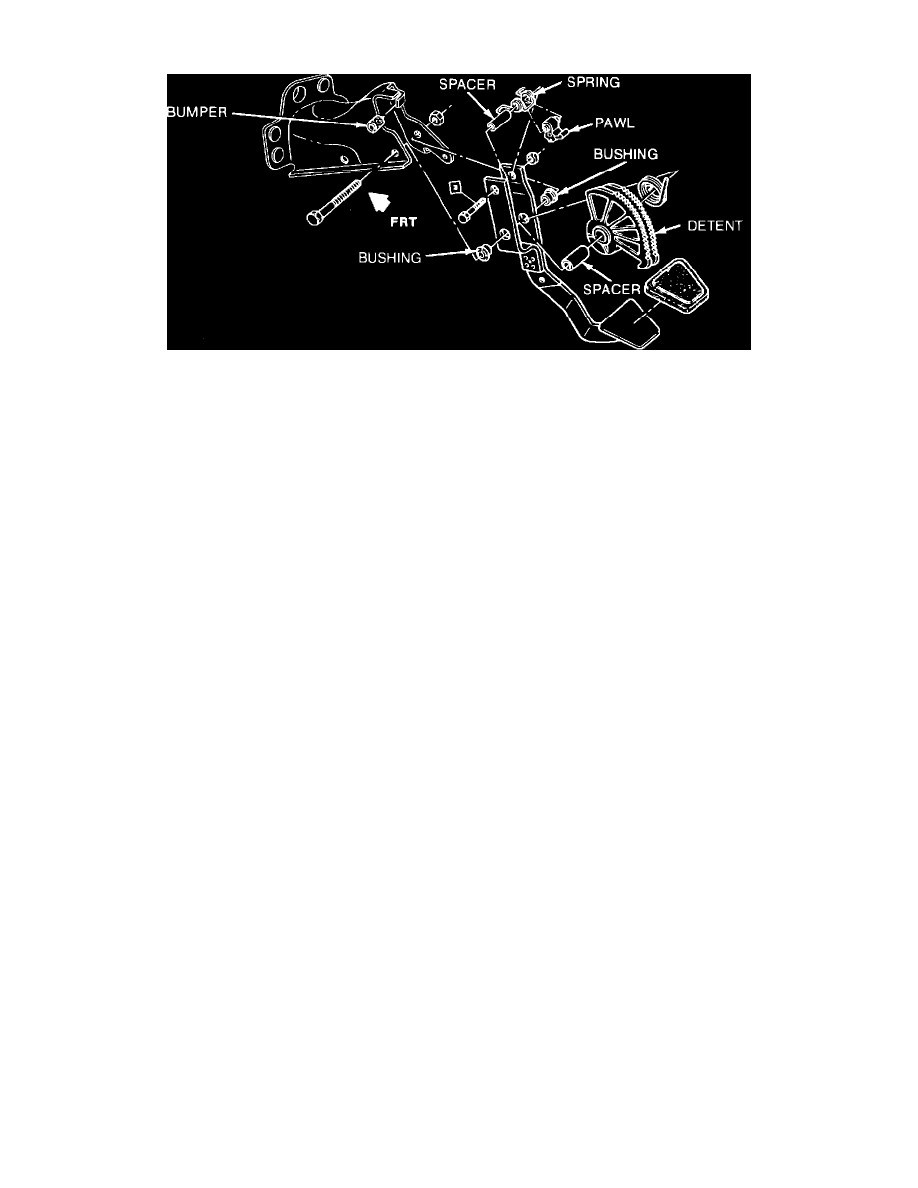Firenza L4-112 1.8L VIN 0 TBI (1982)

Clutch Pedal Assembly: Adjustments
Fig. 1 Clutch self-adjusting mechanism. 1982---84 Models
1982---84 MODELS
The clutch is automatically adjusted by a self-adjusting mechanism, Fig. 1, mounted to the clutch pedal and bracket assembly. The clutch cable is a
fixed length and cannot be shortened or lengthened, however, the position of the cable can be changed by adjusting the position of the detent in relation
to the clutch pedal. This is accomplished by pulling the clutch pedal upward to the rubber bumper. This action forces the pawl against the stop and
causes the pawl to be out of mesh with the detent teeth, allowing the cable to play out until the detent spring load is balanced against the load applied by
the release bearing.
Inspection
1.
With engine running and parking brake applied, depress clutch pedal to approximately 1/2 inch from floor mat.
2.
Move shift lever between ``First'' and ``Reverse'' gears several times. If no gear clashing occurs when shifting into ``Reverse,'' the clutch is
releasing fully.
3.
If the shifting in Step 2 is not smooth, the clutch is not releasing fully and the linkage should be inspected.
4.
Check clutch pedal bushings for sticking or excessive wear.
5.
Have an assistant depress the clutch pedal to the floor and observe clutch fork lever travel at transaxle. The end of the clutch fork lever should
have a total travel of approximately 1.5 to 1.7 inches.
6.
To check the self-adjusting mechanism, depress the clutch pedal and observe if the pawl firmly engages the teeth of the detent.
